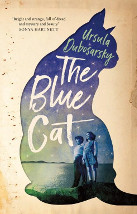The blue cat by Ursula Dubosarsky

Allen and Unwin, 2017. ISBN 9781760292294
(Age: 9+) Highly recommended. World War Two, Refugees, School,
Family. This beautifully written story of the dislocation of
children through war reveals a young girl, Columba, intrigued by the
new boy in her school, Ellery, a refugee from Europe who cannot
speak. She and her friend, Hilda befriend the lonely boy and the
three search Sydney's Luna Park for a lost cat. It is 1942, the
Japanese are to the north and rumours about what is going on and
what will happen frighten them. First Singapore falls, then Darwin
is bombed, each adding a new level of fear within the families and
with their teachers. Hilda is a master at passing on the most
amazing of stories, insisting they are true. Small things occur in
the background, blacking out windows, cars driving without their
lights on, water rationing, while pages in the book are devoted to
advertisements and government orders and instructions, offering the
reader a taste of what life was like during war in Australia.
But the blue cat is like a shadow behind them all, first coming
ashore and following the neighbour home, disappearing during the air
raid drill and seen by the American soldiers near the shore. The cat
parallels the story of Ellery the refugee. Fear stalks them all, and
losing Ellery at Luna Park is a trigger for Columba's imagination to
soar. She experiences what has happened to Ellery and his family and
she when taken home remains in bed for some days. Then the boy, like
the cat disappears.
Dubosarsky's silken prose wraps itself around the reader, touching
them with the haunted innocence of children, hearing adult concerns
but not understanding the adult words. The fear of encroaching war
touches them all. And the readers, like the children, see things in
episodes, episodes that touch their lives, then move on, people that
are there and then not, incidents that loom large, but then fade
away.
As with all Dubosarsky's books the background is impeccably
portrayed and on her website are links
and images of the research behind her book.
Fran Knight